Local News
Josh Bellan cast in lead male role as Eric in Rainbow Stage’s upcoming production of “A Little Mermaid”…Becky Frohlinger to play Jetsam
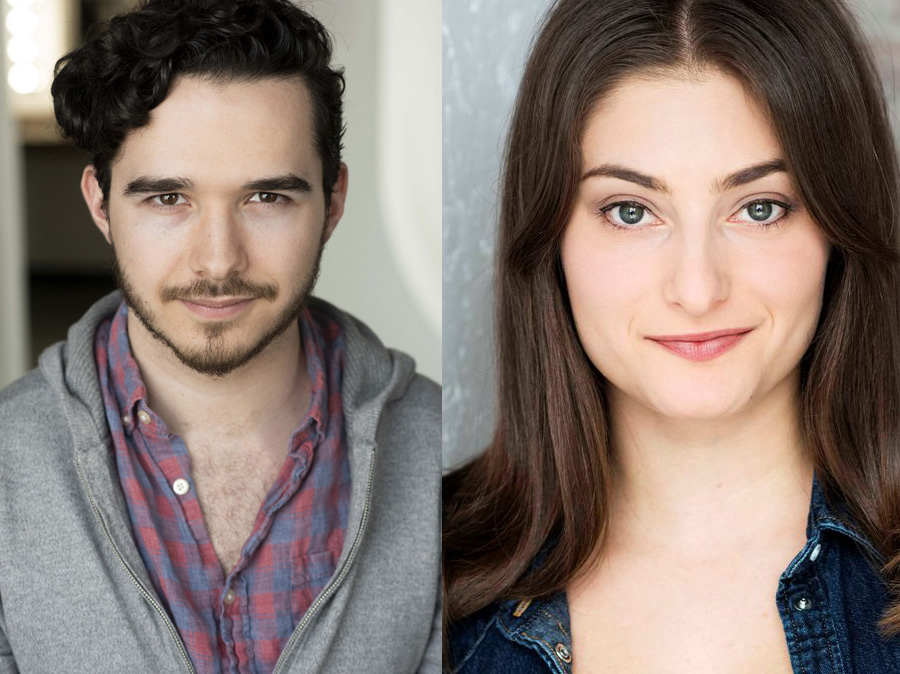
By MYRON LOVE Rainbow Stage, Canada’s only summer musical theatre in a park, has since its earliest days, had a strong connection to our Jewish community. The opening benefit concert in 1954 listed among its featured performers the Jewish community choir led by Cantor Benjamin Brownstone – and, of course, Jack Shapira served as executive producer from 1965 to 1988.
Over the years, many Rainbow Stage productions have included one or more members of uor Jewish community in the cast. This year is no exception. The first production of the season, “Rent” – which ran from June 26 to July 16 – featured by now veteran performers Eliot Lazar playing one of the leads and Rochelle Kives as a member of the ensemble and understudy to one of the leads.
In the upcoming Rainbow Stage production of “The Little Mermaid” – scheduled to run from August 16 to September 3 – rising local musical theatre star Josh Bellan has been cast in the lead role of Eric, the little mermaid’s love interest.
When this writer last wrote about Bellan in 2019, the 24-year-old son of the late Murray Bellan and Robyn Zimberg had been making his first turn on the stage in a lead role in Winnipeg Studio theatre’s production of the musical version of “Reefer Madness”.
Over the past four years, the multi-talented Bellan reports, he has been kept busy with some film and stage work, teaching voice and guitar, and playing guitar accompanying some musical productions. This summer, not only is he playing the lead in “Mermaid,” he is also serving as one of the musicians – guitar and keyboard – for Rainbow Stages’ two other productions – the aforementioned “Rent” and “Afterlight” (September 21-October 1 at the Franco Manitoban Cultural Centre). The latter production, Bellan notes, is the love story between a 500-year-old vampire and an elderly insomniac widow desperately searching for her missing husband.
(“Afterlightt” is the co-creation by local performers Sharon Bajer and Duncan Cox.)
“I am very excited,” he says about his first lead role at the outdoor summer theatre. “I really appreciate this opportunity.”
He reports that he has some tentative theatre work lined up for next year. In the meantime, he will be continuing his teaching and picking up various guitar gigs.
Bellan says that for now,. his career plan is to remain based in Winnipeg but also be available for theatrical opportunities elsewhere.
“I am always excited to be home again,” says Becky Frohlinger, who is playing the role of Jetsam in “The Little Mermaid.”
At 29, the Toronto-based daughter of Heather Pullan and Tom Frohlinger is already a seasoned veteran. She has been involved in musical theatrical productions for as long as she can remember. “I followed in the shoes of my brother and sister,” she said in an earlier interview. “Musical theatre is my passion. I wouldn’t be happy doing anything else.”
She started dancing lessons when she was five or six. While growing up, she appeared in multiple RMTC shows, including appearances in “Gypsy” and “White Christmas”.
After finishing high school in Winnipeg, Becky applied to a number of musical theatre schools in the United States. “I auditioned for 14 schools and was lucky enough to be accepted to Elon University in North Carolina,” she said. “Elon has one of the top five musical theatre schools in the country. It was an incredible experience. Elon really prepares you for the professional world.”
Frohlinger was most recently back in Winnipeg in December to appear in the Manitoba Theatre for Young People’s production of “A Charlie Brown Double Bill.” The year before, she co-starred in the WJT production of “Dear Jack, Dear Louise.”
For the past few years, she reports, she has been appearing in productions right across the country. She has just finished a cross-Canada tour of “Glory,” a new musical created by Canadian playwright Tracey Power, which is based on the true story of four young Canadian women in 1933 who set out to prove that women could play hockey too.
“I played the role of one of the women ho was Jewish and also had to deal with anti-Semitism,” she notes.
And after “The Little Mermaid” -. “I am always open to new opportunities,” she says.
Local News
Thank you to the community from the Chesed Shel Emes
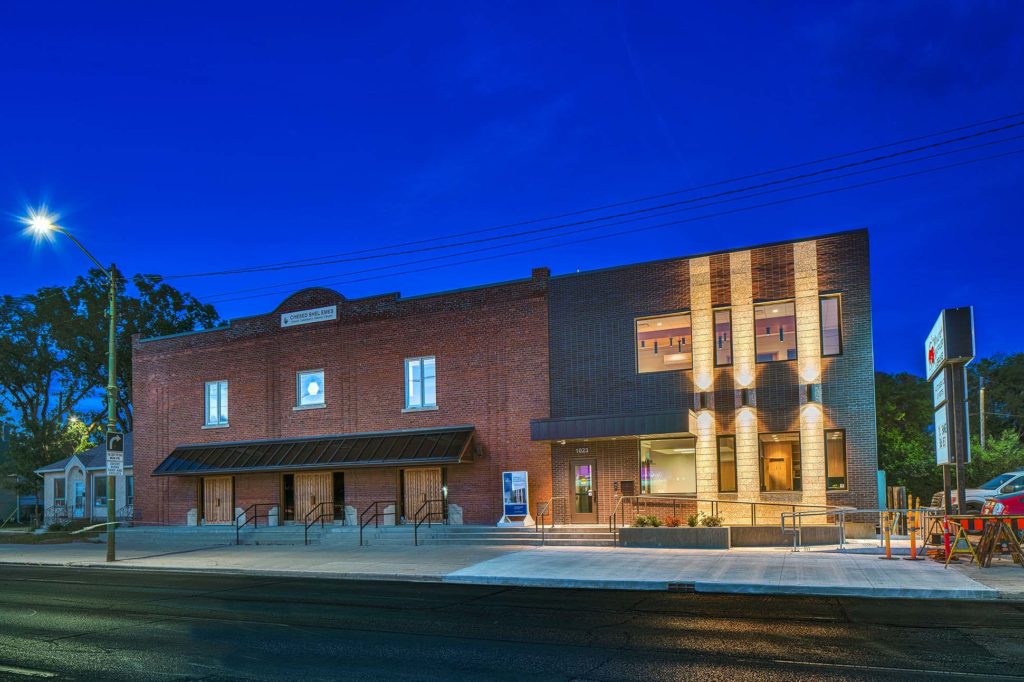
We’re delighted to share a major milestone in our Capital Campaign, “Building on our Tradition.” Launched in November 2018, this campaign aimed to replace our outdated facility with a modern space tailored to our unique needs. Our new building is designed with ritual at its core, featuring ample preparation space, Shomer space, and storage, creating a warm and welcoming environment for our community during times of need.
We’re grateful to the nearly 1,000 generous donors who contributed over $4 million towards our new facility. A $750,000 mortgage will be retired in November 2025, completing this monumental project in just seven years.
We’re also thrilled to announce that our Chesed Shel Emes Endowment Fund has grown tenfold, from $15,000 to $150,000, thanks to you, the Jewish Foundation of Manitoba’s FundMatch program, and Million Dollar Match initiative in 2024. Our fund helps ensure that everyone can have a dignified Jewish funeral regardless of financial need.
As we look to the future, our goal remains to ensure the Chevra Kadisha continues to serve our community for generations to come. Our focus now shifts to replenishing our savings account and growing our JFM Endowment fund.
We’re deeply grateful for your support over the past several years.
It’s our privilege to serve our community with care and compassion.
With sincere appreciation,
Campaign cabinet: Hillel Kravetsky, Gerry Pritchard, Stuart Pudavick,
Jack Solomon, and Rena Boroditsky
Murray S. Greenfield, President
Local News
Winnipeg Beach Synagogue about to celebrate 75th anniversary
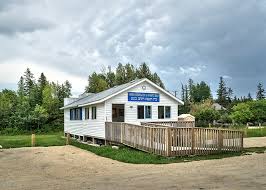
By BERNIE BELLAN (July 13) In 1950 a group of cottage owners at Winnipeg Beach took it upon themselves to relocate a one-room schoolhouse that was in the Beausejour area to Winnipeg Beach where it became the beach synagogue at the corner of Hazel and Grove.
There it stayed until 1998 when it was moved to its current location at Camp Massad.
On August 2nd members of the synagogue will be holding a 75th anniversary celebration.
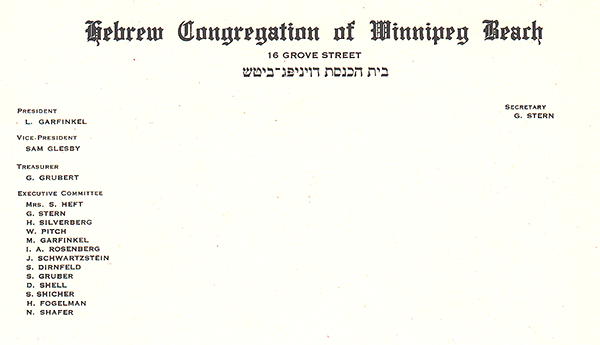
As part of the celebration anyone who is a descendant or relative of any of the original members of the first executive committee (as seen in the photo here) is invited to attend the synagogue that morning.
If you are a relative please contact Abe Borzykowski at wpgbeachshule@shaw.ca or aborzykowski@shaw.ca to let Abe know you might be attending or for more information about the 75th anniversary celebration.
We will soon be publishing a story about the history of the beach synagogue, which is something I’ve been writing about for over 25 years.
Local News
Vickar Family cuts ribbon on new Tova Vickar and Family Childcare Centre
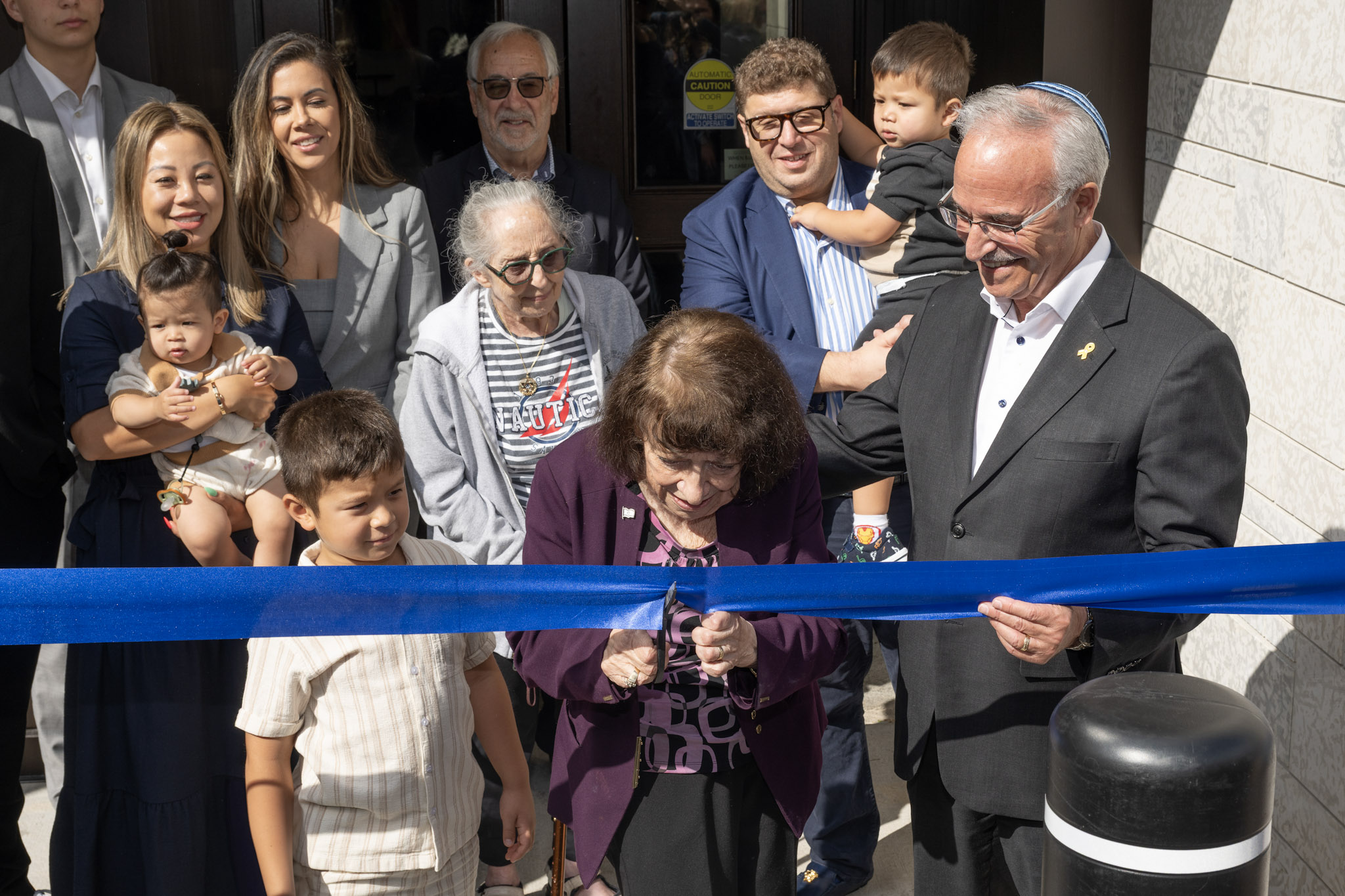
By MYRON LOVE In the words of Larry Vickar, the Shaarey Zedek’s successful Dor V’ Dor Campaign “is not only a renewal of the synagogue but truly a renewal movement of Jewish life in our community.”An integral part of that renewal movement was the creation of a daycare centre within the expanded synagogue. On Monday, June 23, Larry and Tova Vickar cut the ribbon, thereby officially opening the Tova Vickar and Family Childcare Centre in the presence of 100 of their family members, friends and other supporters of the project.
The short program preceding the morning ribbon-cutting began with a continental breakfast followed by a welcome by both Fanny Levy, Shaarey Zedek’s Board President, and Executive Director Dr. Rena Secter Elbaze. In Elbaze’s remarks, she noted that Larry and Tova wanted their family (including son Stephen and family, who flew in from Florida) and friends at the event to celebrate the opening of the Tova Vickar and Family Childcare Centre, “not because of the accolades, but because, as Larry put it, he hopes that their investment in the congregation will inspire others to do the same.”
“When Larry and I spoke about what this gift meant to him and the message he wanted people to take away,” she continued, “I couldn’t help but connect it to the teachings of Reb Zalman Schachter-Shalomi whose book – Age-ing to Sage-ing – changes the whole way we look at the concept of ageing and basing it on our ancestral teachings.”
She explained that his concept of “Sage-ing” is based on three key ideas – Discover your meaning and purpose; accept our mortality and think about the legacy you want to leave.
“Larry spoke about these exact concepts when we met,” she said.
Elbaze also noted the presence of Shaarey Zedek’s newly-arrived senior Rabbi Carnie Rose, former Rabbi Alan Green, and area MLAs Mike Moroz and Carla Compton.
Larry Vickar expressed his great appreciation for all those in attendance. “Tova and I are deeply moved to stand here with you today for this important milestone in our community”, he said. “We are grateful to be surrounded by all of you, the people we care about, our family and friends… you who have touched our lives and played some part in our journey.”
